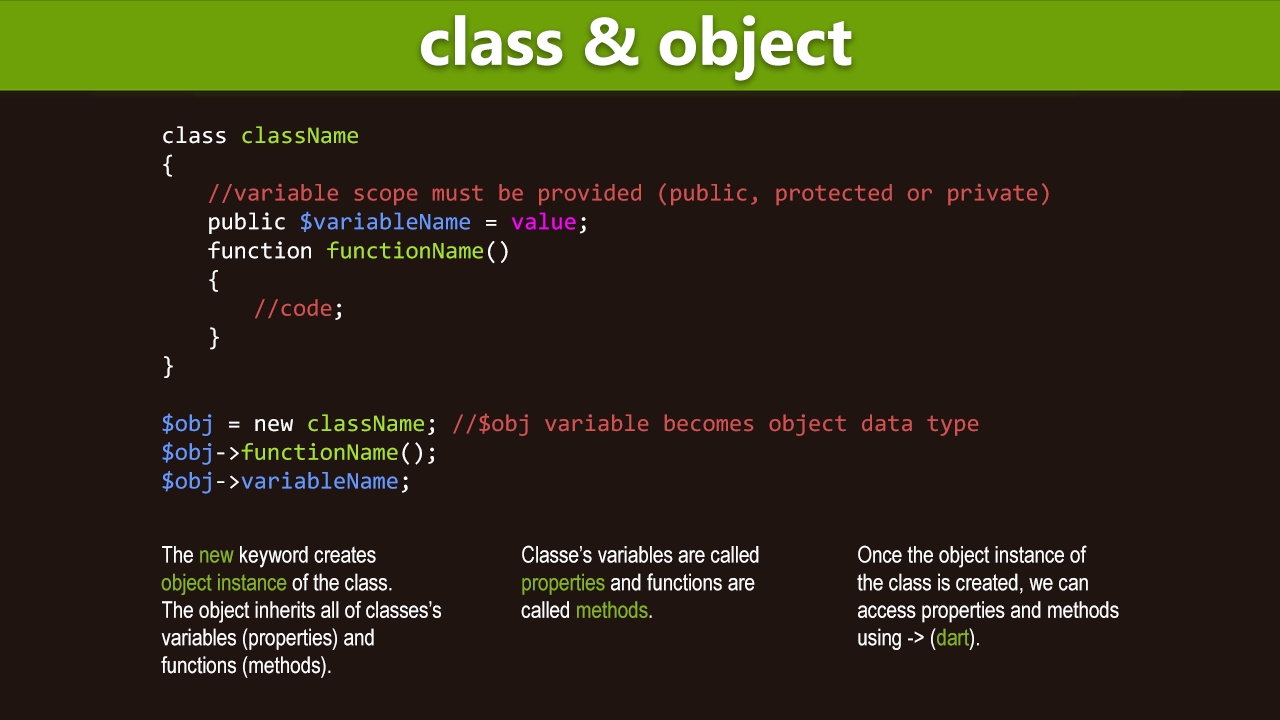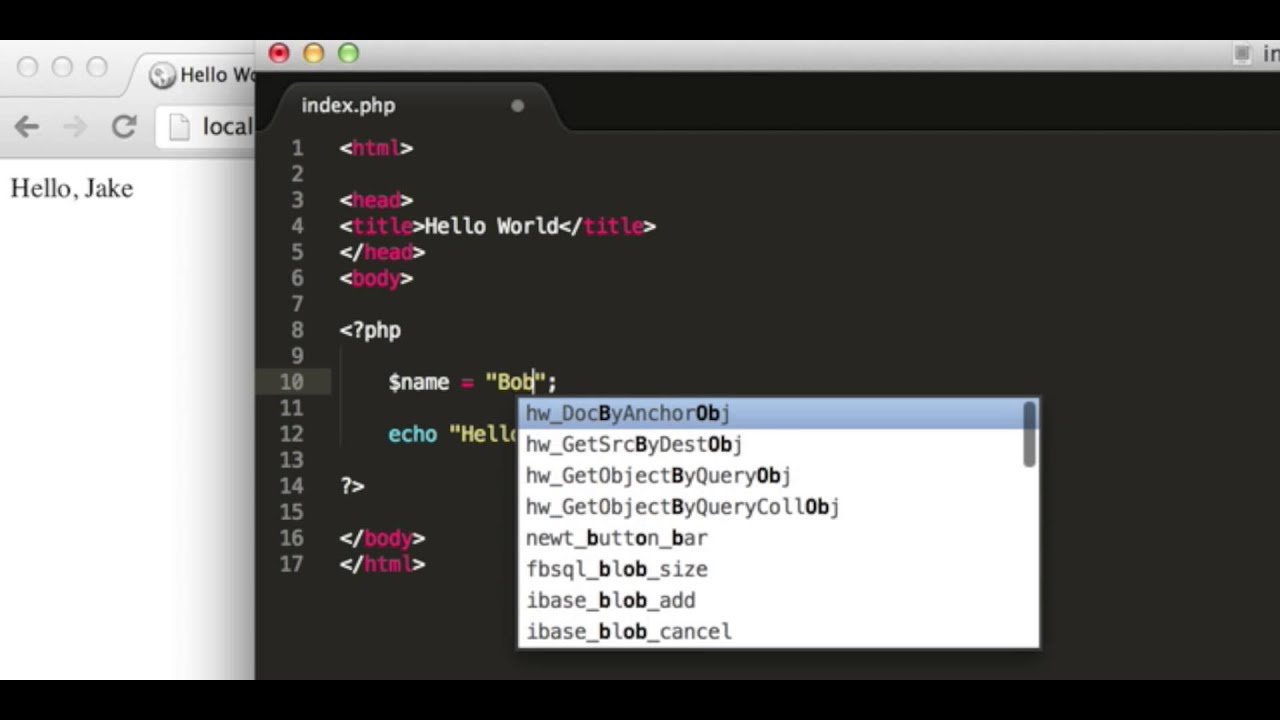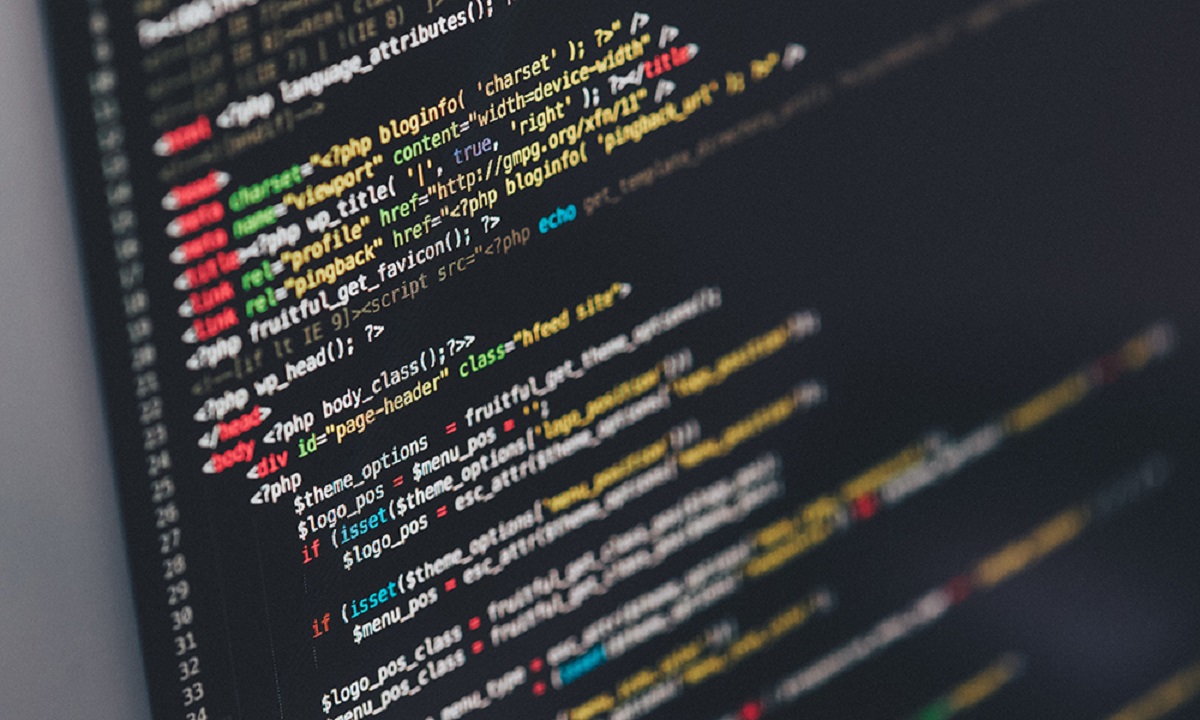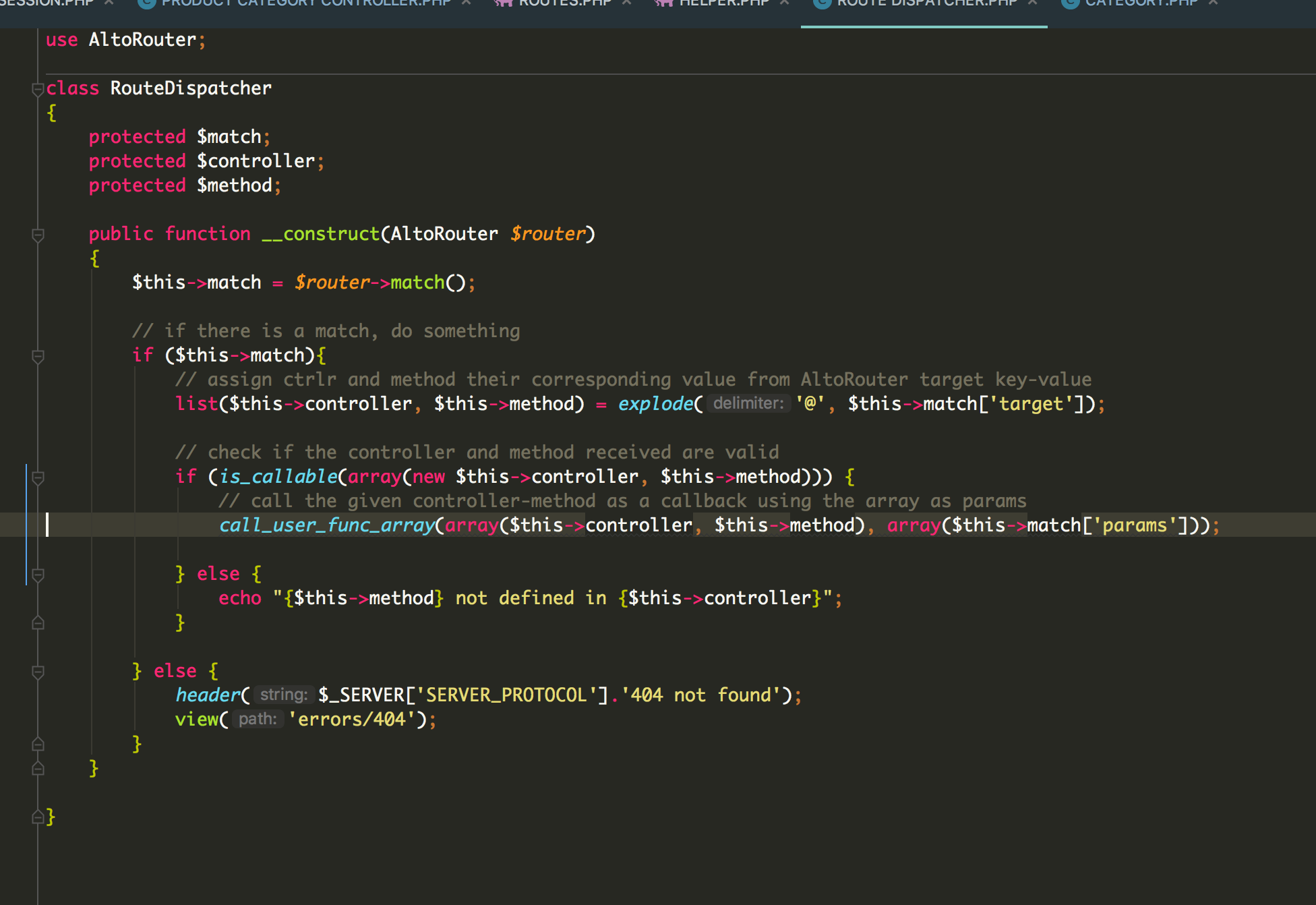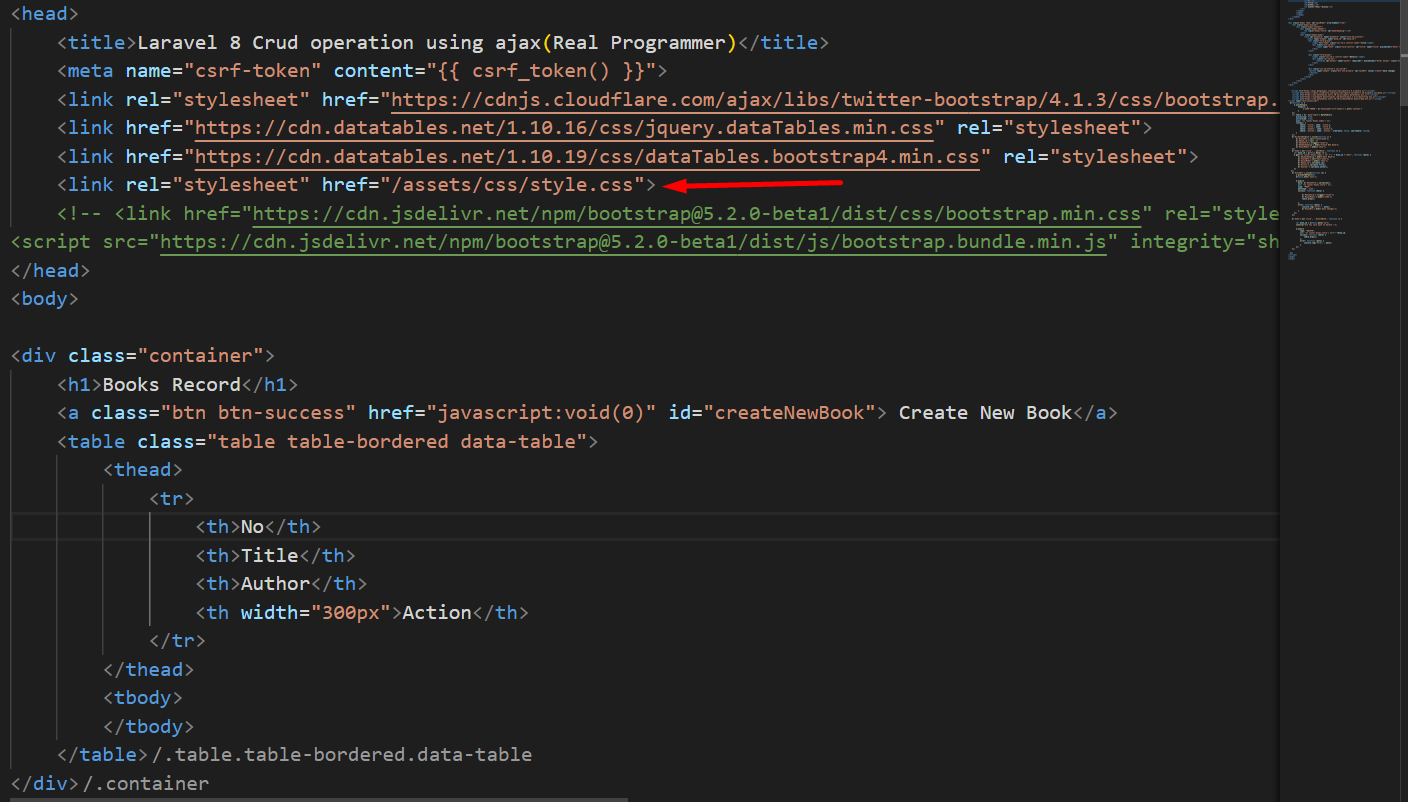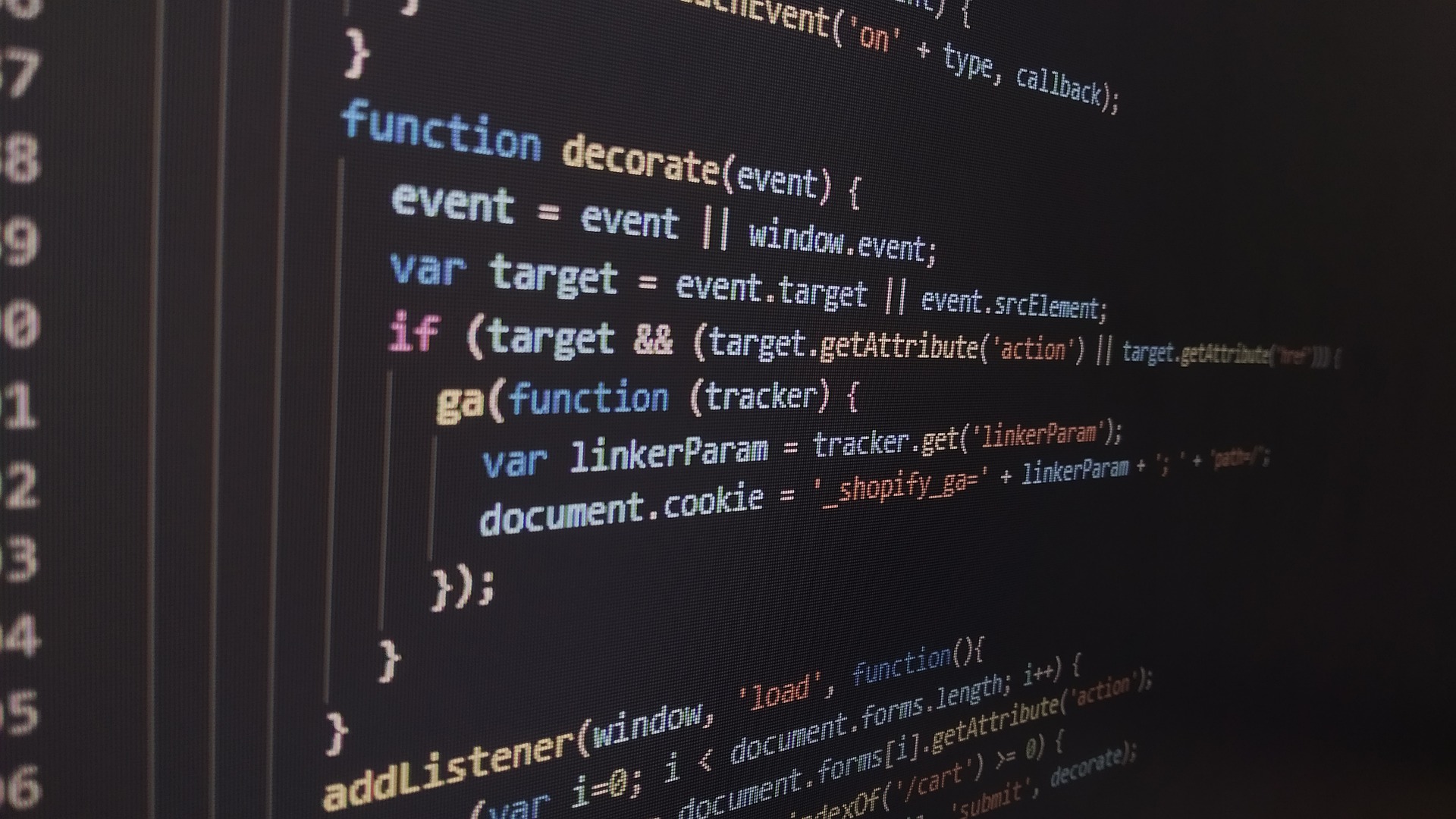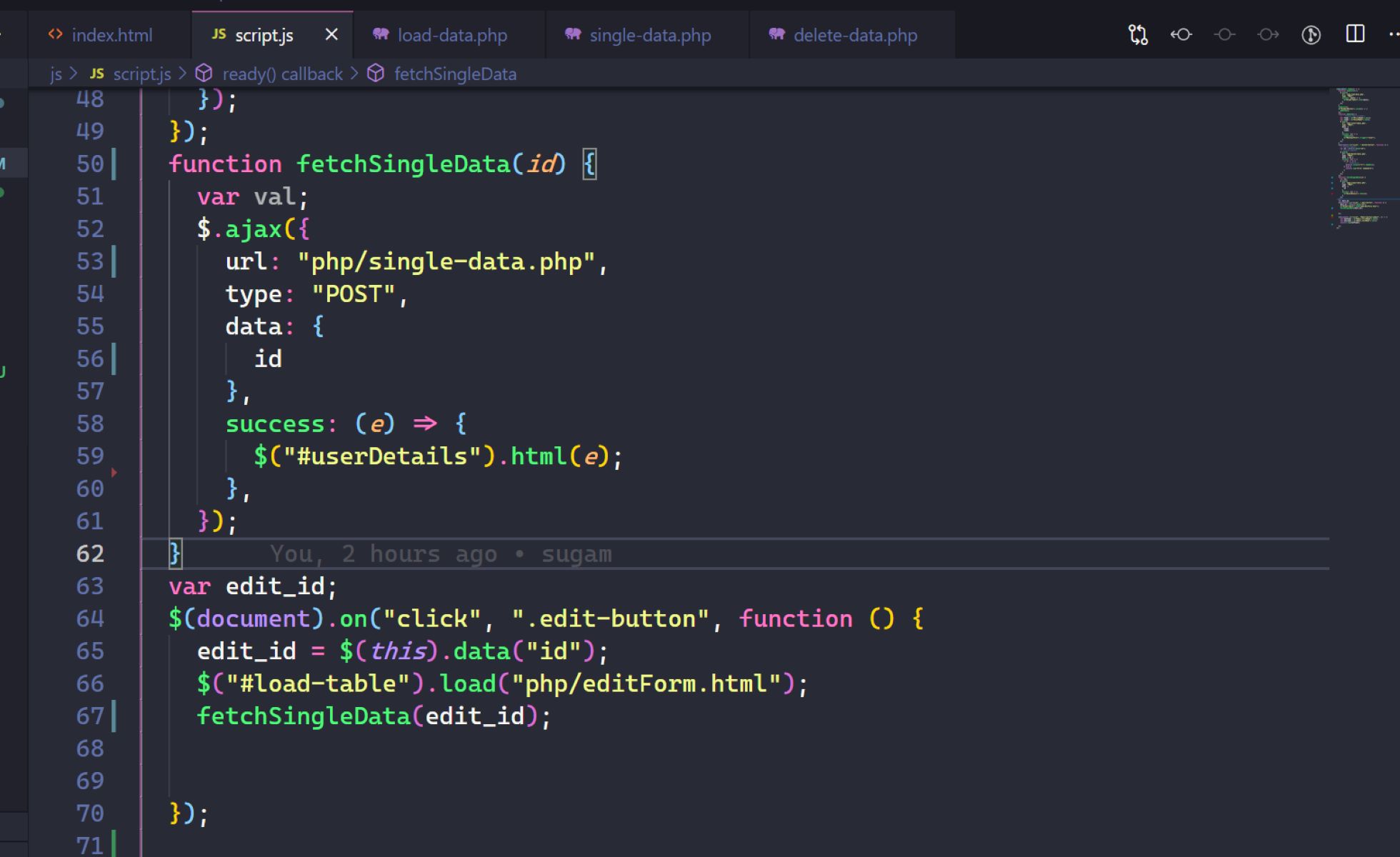Introduction
Welcome to the world of PHP programming! If you’re new to PHP or just starting out, you may have heard about PHP classes and wondered what they are and how to use them effectively. In this article, we’ll dive into the world of PHP classes and explore their syntax, properties, methods, inheritance, and more.
PHP classes are fundamental building blocks in object-oriented programming (OOP) that allow you to create reusable code structures and organize your code in a more efficient and logical manner. Classes provide a blueprint for creating objects, which are instances of those classes.
Using PHP classes, you can encapsulate related properties (variables) and methods (functions) together. This helps in dividing your code into smaller, manageable chunks and promotes code reusability and maintainability.
Think of a PHP class as a blueprint for a specific type of object. For example, if you’re building a website, you can create a class called “User” that defines the properties and methods for handling user-related functionality. Then, you can create multiple instances of the “User” class with different values for each user.
To get started with PHP classes, you need to understand their syntax. A class is defined using the `class` keyword, followed by the class name, and enclosed in curly braces. Let’s explore the basic syntax of a PHP class in the next section.
What is a PHP Class?
A PHP class is a programming construct that allows you to define a blueprint for creating objects. It encapsulates properties (variables) and methods (functions) related to a specific concept or entity. A class serves as a template for creating instances, also called objects, which can be manipulated and interacted with during runtime.
In simpler terms, a PHP class is like a blueprint for a house. It defines the structure and characteristics of the house, such as the number of rooms, the color of the walls, and the type of flooring. Similarly, a PHP class defines the structure and behavior of objects in your code.
Classes are a fundamental part of object-oriented programming (OOP), an approach that emphasizes organizing code around objects that interact with one another. OOP allows for code reuse, modularity, and abstraction. By creating classes, you can define common properties and methods once and reuse them in multiple instances of that class.
For example, if you are developing an e-commerce website, you can create a class called “Product” that defines the properties (such as name, price, and description) and methods (such as adding to cart and updating quantity) related to a product. You can then create individual instances of the “Product” class for each item in your online store.
PHP classes also promote the concept of data encapsulation and abstraction. Encapsulation refers to the bundling of properties and methods within a class, ensuring that they are only accessible and modifiable from within the class itself. This helps in preventing unauthorized access and maintaining data integrity.
Abstraction, on the other hand, involves hiding unnecessary details and providing a simplified interface for interacting with the objects. It allows other parts of your code to interact with the objects without needing to know the internal implementation details of the class.
Now that we have a basic understanding of what PHP classes are, let’s move on to exploring their syntax in the next section.
Syntax of a PHP Class
To define a PHP class, you use the `class` keyword followed by the name you want to give to the class. The class name should follow certain rules, such as starting with a letter or underscore and consisting of letters, numbers, and underscores. It is common practice to use camel case for class names, where the first letter of each word is capitalized.
Here is a basic syntax for defining a PHP class:
class ClassName {
// Properties
public $property1;
private $property2;
protected $property3;
// Methods
public function method1() {
}
private function method2() {
}
protected function method3() {
}
}
Let’s break down the syntax:
– The class is defined using the `class` keyword, followed by the class name (`ClassName` in the example).
– Inside the curly braces `{}`, you can define the properties and methods of the class.
– Properties are declared using the `$` sign followed by the property name.
– You can specify the visibility of properties and methods using access modifiers like `public`, `private`, and `protected`. In the example, we have a public property `$property1`, a private property `$property2`, and a protected property `$property3`.
– Methods are defined using the `function` keyword followed by the method name. Like properties, methods can also have access modifiers.
– In the example, we have a public method `method1()`, a private method `method2()`, and a protected method `method3()`.
It’s important to note that properties store values, while methods perform actions or calculations. The access modifiers control the visibility and accessibility of properties and methods outside of the class.
Now that we know the basic syntax of a PHP class, let’s move on to exploring the concepts of properties and methods in the next section.
Properties and Methods
In a PHP class, properties represent the variables that store data associated with an object. They define the state or characteristics of the objects created from the class. Methods, on the other hand, are functions that define the behavior or actions that can be performed by the objects. They allow you to interact with the properties of the class and perform various operations.
Let’s take a closer look at properties and methods in PHP classes:
Properties:
Properties are declared using the `$` sign followed by the property name. They can have different visibility modifiers such as `public`, `private`, and `protected`, which control the accessibility of the properties from within and outside the class. Public properties can be accessed and modified from anywhere, private properties can only be accessed within the class itself, and protected properties are accessible within the class and its subclasses.
Here’s an example of a PHP class with properties:
class Car {
public $make;
public $model;
private $year;
protected $color;
}
In the example, we have four properties: `$make` and `$model` are public properties, `$year` is a private property, and `$color` is a protected property. This class represents a car object with different properties that define its make, model, year, and color.
Methods:
Methods are defined using the `function` keyword followed by the method name. They can also have different visibility modifiers like properties. Public methods can be called from anywhere, private methods can only be called within the class, and protected methods are accessible within the class and its subclasses.
Here’s an example of a PHP class with methods:
class Car {
public function startEngine() {
// Code to start the car’s engine
}
private function stopEngine() {
// Code to stop the car’s engine
}
protected function changeColor($newColor) {
// Code to change the car’s color
}
}
In this example, we have three methods: `startEngine()`, `stopEngine()`, and `changeColor()`. The `startEngine()` method represents the action of starting the car’s engine, the `stopEngine()` method represents the action of stopping the car’s engine, and the `changeColor()` method represents the action of changing the car’s color.
Properties and methods are the building blocks of a PHP class. They allow you to store data and define behavior for the objects created from the class. Next, we will explore how to instantiate a class and create objects.
Instantiate a Class
In PHP, to start using a class and interact with its properties and methods, you need to instantiate it. Instantiation is the process of creating an object (an instance) of a class. When you instantiate a class, you allocate memory for the object and initialize its properties and methods.
Here’s how you can instantiate a class in PHP:
$object = new ClassName();
In the above example, `ClassName` is the name of the class you want to instantiate. By using the `new` keyword followed by the class name and parentheses, you create a new object of that class.
Let’s consider the previous example of a `Car` class:
class Car {
public $make;
public $model;
private $year;
protected $color;
}
To instantiate the `Car` class and create a car object, you can do the following:
$car = new Car();
Once you have instantiated a class and created an object, you can access its properties and methods using the object variable and the arrow operator `->`. For example, to set the make and model of the car object, you can do:
$car->make = “Toyota”;
$car->model = “Corolla”;
You can also call the object’s methods using the same syntax. For instance, to start the engine of the car object, you can call the `startEngine()` method:
$car->startEngine();
By instantiating a class, you can create multiple objects of the same class, each with its own unique set of property values. This allows you to work with different instances of the class and perform actions specific to each object.
Now that we know how to instantiate a class and create objects, let’s move on to exploring how to access the properties and methods of a class.
Accessing Properties and Methods
Once you have instantiated a class and created an object, you can access the properties and methods of that object using the object variable and the arrow operator (`->`). The arrow operator is used to refer to a specific property or method within the object.
Let’s see how to access properties and methods in PHP:
Accessing Properties:
To access the properties of an object, you use the object variable followed by the arrow operator and the property name. The arrow operator acts as a way to access the specific property within the object.
For example, let’s consider a `Car` class with a public property called `$make`:
php
class Car {
public $make;
private $model;
protected $year;
public function getMake() {
return $this->make;
}
}
$car = new Car();
$car->make = “Toyota”;
echo $car->make; // Output: Toyota
$car->getMake(); // Output: Toyota
In the above example, we create a new `Car` object and assign the value “Toyota” to its `$make` property. Using the object variable `$car` followed by the arrow operator `->` and the property name `make`, we can access and print the value of the `$make` property.
We can also define methods within the class that allow access to private or protected properties. In the above example, the `getMake()` method uses the same syntax with the arrow operator to access the `$make` property and return its value.
Accessing Methods:
To access the methods of an object, you use the object variable followed by the arrow operator and the method name. The arrow operator provides a way to call and execute a specific method within the object.
For example, let’s consider a `Car` class with a public method called `startEngine()`:
php
class Car {
public function startEngine() {
echo “Engine started!”;
}
}
$car = new Car();
$car->startEngine(); // Output: Engine started!
In the above example, we create a new `Car` object and use the object variable `$car` followed by the arrow operator `->` and the method name `startEngine()` to call and execute the `startEngine()` method.
By accessing properties and methods through the object variable and the arrow operator, you can interact with the specific properties and perform actions using the methods of the class.
Next, we will explore the concept of inheritance, where classes can inherit properties and methods from other classes.
Inheritance
Inheritance is a fundamental concept in object-oriented programming that allows classes to inherit properties and methods from other classes. It is a way to create a hierarchical relationship between classes, where a child class can inherit characteristics and behavior from a parent class.
Using inheritance, you can create a base class (or parent class) with common properties and methods that can be reused by multiple derived classes (or child classes). The child classes can then extend or add additional functionality to the base class, while still inheriting the properties and methods defined in the parent class.
To demonstrate inheritance in PHP, let’s consider a simple example:
php
class Animal {
public $name;
public function eat() {
echo “The animal is eating.”;
}
}
class Dog extends Animal {
public function bark() {
echo “The dog is barking.”;
}
}
In the above example, we define an `Animal` class with a public property `$name` and a method `eat()`. Then, we create a `Dog` class that extends the `Animal` class using the `extends` keyword. The `Dog` class has an additional method `bark()`.
By using inheritance, the `Dog` class automatically inherits the properties and methods of the `Animal` class. This means that objects created from the `Dog` class will have access to the `$name` property and the `eat()` method.
Let’s see how we can use inheritance to create objects and access properties and methods:
php
$animal = new Animal();
$animal->name = “Lion”;
$animal->eat(); // Output: The animal is eating.
$dog = new Dog();
$dog->name = “Spot”;
$dog->eat(); // Output: The animal is eating.
$dog->bark(); // Output: The dog is barking.
In the above example, we create an object `$animal` of the `Animal` class and set the `$name` property to “Lion”. We can call the `eat()` method on the `$animal` object, which outputs “The animal is eating.”
Similarly, we create an object `$dog` of the `Dog` class and set the `$name` property to “Spot”. Since the `Dog` class inherits from the `Animal` class, we can call the `eat()` method on the `$dog` object as well. Additionally, we can call the `bark()` method specific to the `Dog` class, which outputs “The dog is barking.”
Inheritance allows for code reuse, modularity, and the ability to create specialized classes that inherit common properties and behaviors from a parent class. This promotes code efficiency and organization in larger projects.
Next, we will delve into the concept of overriding methods, where child classes can provide their own implementation of inherited methods.
Overriding Methods
In object-oriented programming, overriding is the ability of a child class to provide its own implementation of a method that was inherited from a parent class. When a method is overridden, the child class can modify or extend the behavior of the inherited method, allowing for customization and specialization.
To override a method in PHP, the child class must have a method with the same name as the parent class method. By redefining the method in the child class, the child class’ implementation of the method will be used instead of the parent class’ implementation.
Let’s see an example of method overriding in PHP:
php
class Animal {
public function makeSound() {
echo “The animal makes a sound.”;
}
}
class Dog extends Animal {
public function makeSound() {
echo “The dog barks.”;
}
}
In the above example, we have an `Animal` class with a method `makeSound()`. Then, we have a `Dog` class that extends the `Animal` class and overrides the `makeSound()` method with its own implementation.
Now, let’s create objects and call the overridden method:
php
$animal = new Animal();
$animal->makeSound(); // Output: The animal makes a sound.
$dog = new Dog();
$dog->makeSound(); // Output: The dog barks.
In this case, when we call the `makeSound()` method on the `$animal` object of the `Animal` class, it uses the parent class’ implementation and outputs “The animal makes a sound.”
On the other hand, when we call the `makeSound()` method on the `$dog` object of the `Dog` class, it uses the child class’ overridden method and outputs “The dog barks.”
Method overriding allows for the customization and specialization of behavior in child classes. It provides the flexibility to modify the behavior of inherited methods to better suit the specific needs of the child class.
Next, let’s explore the concept of abstract classes, which serve as blueprints for other classes.
Abstract Classes
In PHP, an abstract class is a class that cannot be instantiated and serves as a blueprint for other classes. It can contain both abstract and non-abstract (concrete) methods and may also have properties. Abstract classes provide a way to define common functionality that must be implemented by its child classes.
To define an abstract class in PHP, you use the `abstract` keyword before the `class` keyword. Abstract methods are declared using the `abstract` keyword before the method definition. Abstract methods do not have any implementation and must be defined in the child classes.
Here’s an example of an abstract class in PHP:
php
abstract class Vehicle {
protected $brand;
abstract public function start();
public function getBrand() {
return $this->brand;
}
}
In the above example, we have an `abstract` class `Vehicle` that has a protected property `$brand` and an abstract method `start()`. The `getBrand()` method is a non-abstract method with an implementation.
Abstract classes cannot be instantiated directly. They are meant to be extended by other classes, which then provide the implementation for the abstract methods. When a class extends an abstract class, it must implement all the abstract methods declared in the abstract class.
Let’s see an example of a class that extends the abstract `Vehicle` class and implements the abstract method:
php
class Car extends Vehicle {
public function start() {
echo “The car is starting.”;
}
}
In this example, the `Car` class extends the `Vehicle` abstract class and provides its own implementation for the `start()` method. The `start()` method in the child class satisfies the requirement of implementing the abstract method declared in the parent abstract class.
Now, let’s create an object of the `Car` class and call its methods:
php
$car = new Car();
$car->start(); // Output: The car is starting.
echo $car->getBrand(); // Output: null
We can instantiate the `Car` class and call its `start()` method, as well as access the `getBrand()` method inherited from the `Vehicle` abstract class.
Abstract classes provide a way to define a common interface and behaviors that must be implemented by their child classes. They help in promoting code reusability and enforce consistency in the implementation of methods in different classes that share a common structure or functionality.
Next, we will explore the concept of encapsulation, which provides a way to control access to properties and methods.
Encapsulation
In object-oriented programming, encapsulation refers to the bundling of related properties (variables) and methods (functions) into a single unit, known as a class. It is a mechanism that promotes data and behavior hiding, ensuring that the internal state of an object can only be accessed and modified through defined methods. Encapsulation provides a way to control access to the internal components of a class, providing data integrity and security.
Encapsulation is achieved using access modifiers, which define the visibility and accessibility of properties and methods from different parts of the code. The three main access modifiers in PHP are:
– Public: Public properties and methods are accessible from anywhere, both within the class itself and from outside the class.
– Private: Private properties and methods are only accessible from within the class that defines them. They cannot be accessed from outside the class or its child classes.
– Protected: Protected properties and methods are accessible within the class that defines them and its child classes. They cannot be accessed from outside the class.
By encapsulating properties with appropriate access modifiers, you can control the visibility and accessibility of the data. This prevents direct modification of properties from outside the class and ensures that data is accessed and modified only through the defined methods.
Here’s an example illustrating encapsulation in PHP:
php
class Person {
protected $name;
private $age;
public function setName($name) {
$this->name = $name;
}
public function getName() {
return $this->name;
}
public function setAge($age) {
if ($age > 0) {
$this->age = $age;
}
}
public function getAge() {
return $this->age;
}
}
In the example above, the `Person` class encapsulates the `name` and `age` properties. The `name` property is declared as protected, allowing access within the class and its child classes, while the `age` property is declared as private, restricting access to only within the class.
Access to the properties is provided through the public methods `setName()`, `getName()`, `setAge()`, and `getAge()`. These methods act as interfaces to modify and retrieve the values of the properties. By encapsulating the properties and exposing them through public methods, we control how the data in the class is accessed and ensure proper data validation and manipulation.
Encapsulation provides several benefits, including:
– Data protection: Encapsulation ensures that the internal state of an object cannot be modified directly from outside the class, providing data integrity and security.
– Code organization: By bundling related properties and methods in a class, encapsulation helps in organizing and maintaining clean and modular code structures.
– Code reusability: Encapsulation promotes code reusability as classes can be used as building blocks to create new objects with similar behaviors and properties.
– Reduced dependencies: Encapsulation reduces dependencies by hiding the implementation details of a class, enabling other parts of the code to interact with the class through its well-defined interface.
Next, let’s explore the access modifiers in detail to better understand their usage in encapsulation.
Access Modifiers
In PHP, access modifiers are keywords used to specify the visibility and accessibility of properties and methods within a class. They determine whether other parts of the code can access and modify the properties and call the methods of a particular class. PHP provides three main access modifiers: public, private, and protected.
Here’s a brief explanation of each access modifier:
– Public: Public properties and methods are accessible from anywhere, both within the class itself and from outside the class. They can be accessed and modified directly without any restrictions. Public methods can be called using the object variable and the arrow operator (`->`).
– Private: Private properties and methods are only accessible from within the class that defines them. They cannot be accessed from outside the class or its child classes. Private properties and methods are used to encapsulate implementation details and ensure that they are accessed and modified only through public methods.
– Protected: Protected properties and methods are accessible within the class that defines them and its child classes. They cannot be accessed from outside the class. Protected properties and methods are often used when you want to allow access within the class hierarchy but restrict access from outside.
Let’s see how these access modifiers are used in PHP:
php
class Person {
public $name;
private $age;
protected $address;
public function setName($name) {
$this->name = $name;
}
private function setAge($age) {
if ($age > 0) {
$this->age = $age;
}
}
protected function setAddress($address) {
$this->address = $address;
}
}
In the example above, we have a `Person` class with three properties: `$name` (public), `$age` (private), and `$address` (protected). We also have three methods: `setName()` (public), `setAge()` (private), and `setAddress()` (protected).
Using the access modifiers, we can control the visibility and accessibility of these properties and methods. Public properties can be accessed and modified directly, both from inside and outside the class. Private properties can only be accessed and modified within the class itself. Protected properties can be accessed and modified only within the class and its child classes.
Similarly, public methods can be called and executed from anywhere. Private methods can only be called within the class that defines them. Protected methods can be called within the class and its child classes.
By using the appropriate access modifiers, you can define the level of encapsulation and ensure that the properties and methods of a class are accessed and modified according to your design and logic.
Understanding access modifiers is crucial for achieving proper encapsulation and maintaining data integrity within your classes.
Next, let’s explore the concept of constructors and destructors, which are special methods in PHP classes.
Constructor and Destructor
In PHP, the constructor and destructor are special methods that are automatically called when an object is instantiated or destroyed, respectively. They provide a way to initialize object properties and perform cleanup tasks before an object is no longer needed.
Constructor:
The constructor is a method in a class that is automatically invoked when an object of that class is created. It allows you to initialize the object’s properties or perform any necessary setup operations. In PHP, the constructor method has the same name as the class and is defined using the `__construct()` method.
Here’s an example:
php
class Person {
public $name;
public function __construct($name) {
$this->name = $name;
echo “A new person object has been created.”;
}
}
In the example above, we define a `Person` class with a constructor method `__construct()`. The constructor takes a parameter `$name` and assigns it to the object’s `$name` property. Inside the constructor, we also echo a message to indicate that a new person object has been created.
When we create an object of the `Person` class, the constructor is automatically called, and the initialization code is executed:
php
$person = new Person(“John”);
// Output: A new person object has been created.
The constructor allows you to set default values, validate inputs, or perform other initialization tasks when an object is created.
Destructor:
The destructor is a method that is automatically called when an object is no longer referenced or explicitly destroyed. It is used to perform cleanup operations or release resources that the object might have acquired during its lifecycle. In PHP, the destructor method is defined using the `__destruct()` method.
Here’s an example:
php
class Person {
public function __construct() {
echo “A new person object has been created.”;
}
public function __destruct() {
echo “The person object is being destroyed.”;
}
}
In the example above, we define a `Person` class with a constructor method `__construct()` and a destructor method `__destruct()`. The constructor echoes a message when a new person object is created, while the destructor echoes a message when the person object is being destroyed.
When the object is no longer referenced or the script execution ends, the destructor is automatically called:
php
$person = new Person();
unset($person);
// Output: A new person object has been created.
// Output: The person object is being destroyed.
In the example, we create a person object and then explicitly unset the object using `unset()` to trigger the destruction of the object. Upon destruction, the destructor is called, and the corresponding message is echoed.
The destructor is useful for performing cleanup operations such as closing database connections, releasing file handles, or freeing up memory resources.
Understanding the concept of constructors and destructors allows you to perform necessary setup and cleanup tasks when working with objects in PHP.
Next, let’s explore the concept of static methods and properties, which offer class-level functionality.
Static Methods and Properties
In PHP, static methods and properties belong to the class itself rather than to specific instances of the class. They can be accessed and used without creating an object of the class. Static methods and properties are declared using the `static` keyword.
Static Properties:
A static property is a variable that is shared among all instances of the class. It retains its value across different objects, and any changes made to the static property will be reflected in all instances of the class. Static properties are declared using the `static` keyword.
Here’s an example:
php
class Counter {
public static $count = 0;
public function __construct() {
self::$count++;
}
}
$counter1 = new Counter();
echo Counter::$count; // Output: 1
$counter2 = new Counter();
echo Counter::$count; // Output: 2
In the example above, we define a `Counter` class with a static property `count`. Inside the constructor, we increment the count whenever a new object is created. By accessing the static property using the class name and the scope resolution operator `::`, we can get the total count of objects created.
Static Methods:
A static method is a method that belongs to the class itself and can be invoked without creating an object. They are defined using the `static` keyword and can only operate on static properties and call other static methods.
Here’s an example:
php
class MathUtils {
public static function square($num) {
return $num * $num;
}
}
echo MathUtils::square(5); // Output: 25
In this example, we have a `MathUtils` class with a static method `square()` that calculates the square of a number. We can directly call the static method using the class name and the scope resolution operator `::`, without instantiating an object of the class.
Static methods and properties are useful when you have functionality that is not specific to a particular instance but is related to the class as a whole. They provide a way to organize and access shared data or perform common operations without the need for object instantiation.
It’s important to note that static methods cannot access non-static properties or call non-static methods. They have limited access to the class’s internal state and are primarily used for utility functions or shared data management.
Next, let’s explore the concept of magic methods, which are special methods that PHP provides for additional functionality.
Magic Methods
In PHP, magic methods are special methods with predefined names that provide additional functionality to classes. They are automatically called at certain events or when certain operations are performed on objects. Magic methods start with a double underscore (`__`) and are used to handle common tasks such as object creation, property access, method invocation, and more.
Let’s explore some commonly used magic methods:
- __construct(): The constructor method is called automatically when an object is created from a class. It is used to initialize object properties or perform any necessary setup operations.
- __get() and __set(): These methods are used to handle the reading and writing of inaccessible or non-existent properties of an object, respectively. They are triggered when getting or setting a property that is not directly accessible.
- __isset() and __unset(): These methods are used to handle the `isset()` and `unset()` functions when called on inaccessible or non-existent properties of an object. They are triggered when checking if a property is set or unsetting a property.
- __call() and __callStatic(): These methods are used to invoke inaccessible or non-existent methods of an object, respectively. They are triggered when calling a method that is not directly accessible. __call() is called for non-static methods, while __callStatic() is called for static methods.
- __toString(): This method is used to define the string representation of an object. It is automatically called when an object is used in a string context, such as when using `echo` or `print` on the object.
- __clone(): This method is called when an object is cloned using the `clone` keyword. It allows you to define custom behavior for copying object properties.
- __destruct(): The destructor method is called automatically when an object is no longer referenced or explicitly destroyed. It is used to perform cleanup operations or release resources that the object might have acquired during its lifecycle.
Here’s an example illustrating the usage of some magic methods:
php
class Person {
private $name;
public function __construct($name) {
echo “A new person object has been created.”;
$this->name = $name;
}
public function __get($property) {
if ($property === ‘name’) {
return $this->name;
}
}
public function __set($property, $value) {
if ($property === ‘name’) {
$this->name = $value;
}
}
public function __toString() {
return “Person: ” . $this->name;
}
}
$person = new Person(“John”);
echo $person->name; // Output: John
$person->name = “Jane”;
echo $person; // Output: Person: Jane
In the example above, we define a `Person` class with the `__construct()`, `__get()`, `__set()`, and `__toString()` magic methods. The `__construct()` method initializes the `name` property, `__get()` and `__set()` methods handle property access, and `__toString()` defines the string representation of the object.
By implementing magic methods, you can add customized behavior to your classes and handle common operations transparently.
It’s important to note that not all magic methods need to be defined in a class. Only the magic methods that are relevant to the desired functionality need to be implemented.
Next, let’s explore the concept of using HTML in our SEO content writing.
Conclusion
In this article, we have explored various aspects of PHP classes, including their syntax, properties, methods, inheritance, encapsulation, access modifiers, constructors, destructors, static methods, and magic methods. Understanding these concepts is essential for writing efficient and maintainable PHP code.
By using classes, you can organize your code into reusable and modular structures, promoting code reusability and maintainability. PHP classes allow you to encapsulate related data and behavior together, ensuring data integrity and providing a clear interface for interaction.
Through inheritance, child classes can inherit properties and methods from parent classes, while overriding methods allows the customization of inherited functionality. Access modifiers allow you to control the visibility and accessibility of properties and methods, ensuring proper encapsulation and data protection.
Constructors and destructors provide a way to initialize properties and perform cleanup tasks during object creation and destruction. Static methods and properties offer class-level functionality that can be accessed without object instantiation. Magic methods provide additional functionality for handling common tasks, such as property access, method invocation, and object manipulation.
By mastering these concepts, you can write well-structured and efficient PHP code, enhancing the readability, maintainability, and reusability of your projects.
Remember to validate your HTML encoding to ensure your output adheres to the standards and is displayed correctly in web browsers. Implementing SEO best practices and creating well-written content can significantly enhance the search engine visibility of your website or application.
Now that you have a solid understanding of PHP classes and their various aspects, you’re ready to dive deeper into object-oriented programming and leverage these concepts to build robust and scalable PHP applications.







